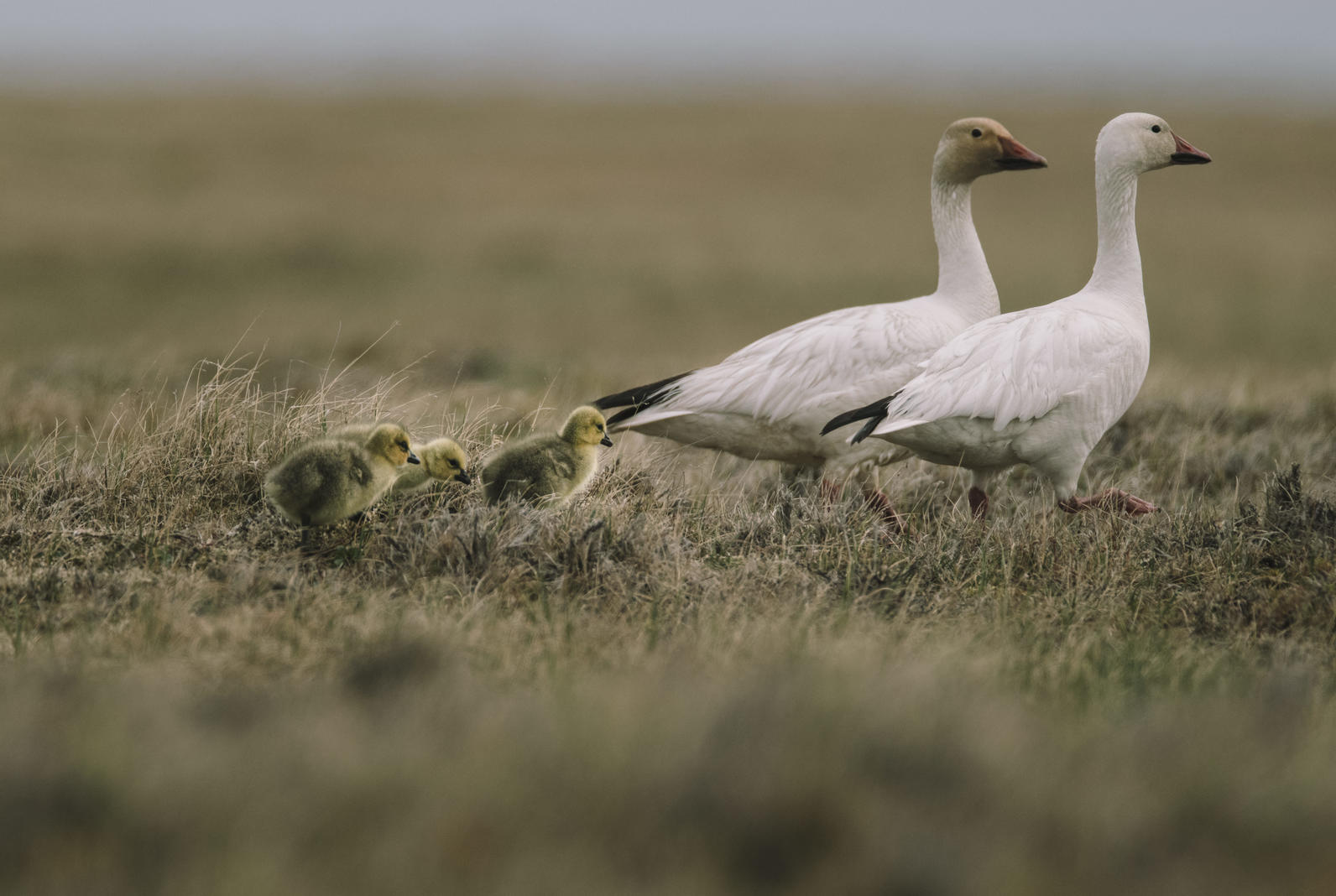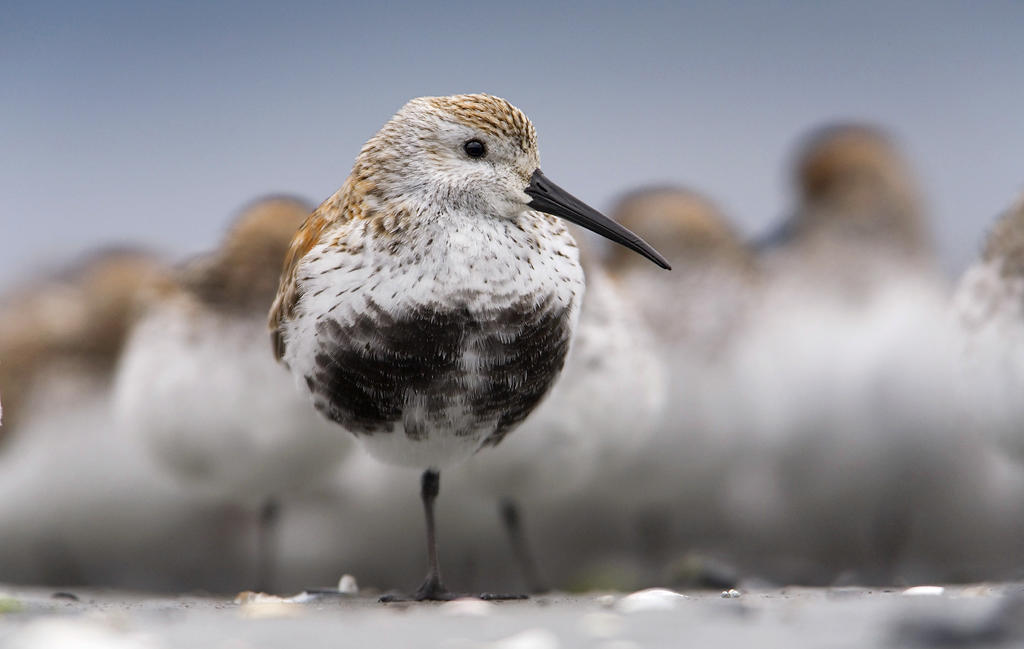The National Petroleum Reserve–Alaska (NPR-A) is a 23-million acre parcel of federal land in Alaska’s western Arctic, which boasts some truly magnificent birds and wildlife. Within the NPR-A are special areas, designated for their wildlife, scenic, and cultural importance. The Teshekpuk Lake Special Area comprises a spectacular coastal wetlands complex that is well-known for providing habitat for molting geese and the Teshekpuk Caribou Herd. The Colville River Special Area is famous for its cliff-nesting raptors. These areas are also home to nesting owls, geese, and shorebirds. While Snowy Owls, Snow Geese, and Dunlin may be familiar to people outside the Arctic, take a minute to visit these species in their summer home, where they raise their young and dance for their mates.
Snowy owls are ground nesters, finding slightly higher mounds on the otherwise flat tundra, and laying their eggs directly on the ground. These tiny owlets hatched this past summer in the Teshekpuk Lake wetlands, and they grew up in an area that is currently protected as a designated “no oil leasing” area in the NPR-A. Snowy owls can stay in the Arctic all year long, as long as they have something to eat. But they will disperse to other parts of the Arctic, or even to the Lower 48, in search of food during the winter, especially in years of low rodent populations. Those owls that do remain in the utter darkness of the polar winters stay near villages or near open water out on the sea ice, where they hunt or scavenge for food. While other raptors such as rough-legged hawks and peregrine falcons are attracted to nest along the cliffs of the Colville River Special Area, snowy owls are ground nesters and are found across the NPR-A, including within the Teshekpuk Lake Special Area.

Snow geese are known for their braying honks as they fly overhead or assemble in large wintering populations. Snow Geese congregate around Teshekpuk Lake in order to molt their feathers in the relative safety of the wetlands. But these geese also breed in the area, nesting directly on the ground, with the female adding leaves, small sticks, and down feathers as the eggs are laid. Snow goslings are almost immediately mobile after they hatch, and they grow quickly as they forage on tundra vegetation. These little goslings hatched this past summer in the Teshekpuk Lake area, and this family group probably migrated together along the west coast. When they return to in the spring, the parents may try to nest again, or they may take a year off to build energy reserves. Meanwhile, the goslings will go their separate ways to seek their own fortune in the wild Western Arctic they call home.

Shorebirds, such as Dunlin and Black-bellied Plover are familiar as either migrants or wintering visitors to people in the Lower 48. But these birds live entirely different lives on their Arctic breeding grounds, where they wear bold breeding plumages, sing complex songs, and many have displays and dances that seem extravagant for what are otherwise diminutive little birds. The male Black-bellied Plover sings kooodleeooo while fluttering slowly over his territory, descending slowly in zig-zags, and then dashing toward the awaiting female. The song from the male Dunlin is a series of gravelly drurr-drurr-drurr “frog-like” calls, followed by a high-pitched descending whinnying trill chrri-i-i-i-i-i. The song is paired with a display flight that combine rapid flutters and slow glides. The western Arctic, particularly the tundra south and west of Teshekpuk Lake, provide important breeding grounds for these and other shorebirds. It is estimated that millions of shorebirds breed in the NPR-A, with 600,000 breeding in the Teshekpuk Lake area alone.
The current land management plan in the NPR-A is called the Integrated Activity Plan, and it helps protect these birds and their homes by designating special areas that are subject to greater scrutiny or are off-limits to oil and gas altogether. But the Trump Administration has just released a proposal to open the Teshekpuk Lake Special Area to oil and gas leasing and further loosen drilling restrictions in the Colville River Special Area. Please take action and help protect these birds’ homes!



